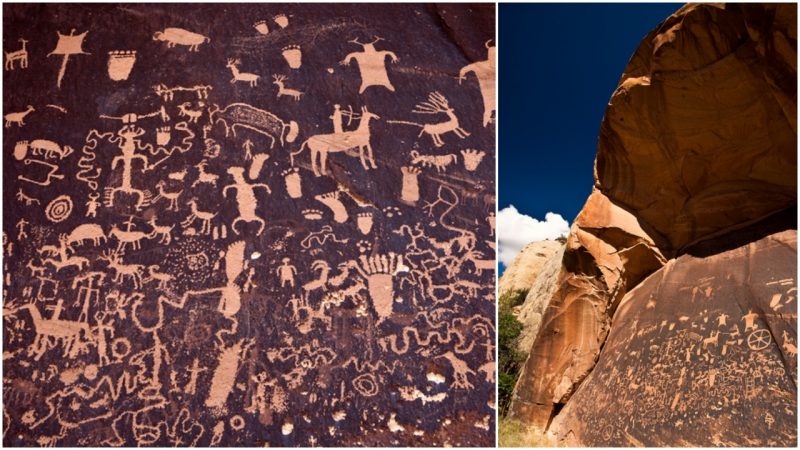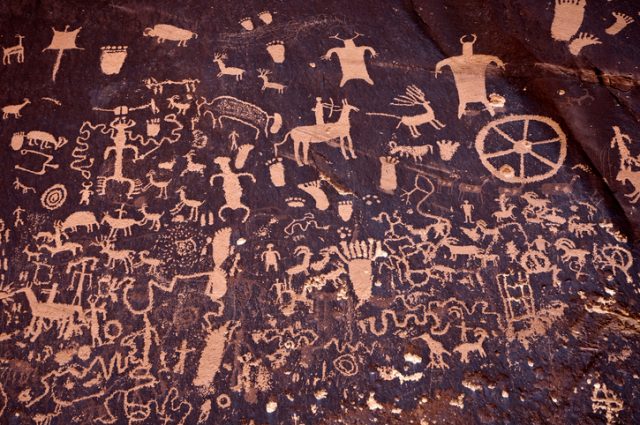
"The Rock That Tells a Story": Native American petroglyphs in Utah and Arizona depict lives of centuries ago
It’s all the news that’s fit to print–2,000 years’ worth of it, in fact–crammed on a 200-square-foot surface. Now if we only knew how to read it.
Newspaper Rock is a sandstone panel in San Juan County, Utah, that is covered with hundreds of petroglyphs. Snakes and broad-shouldered animal-headed men are crammed in with shapes that resemble wagon wheels, bighorn sheep, lizards, and turtles. Men on horseback are also shown late in the art’s history–starting about 650 years ago.
Herds of deer and lone bison dodge hunters and oversized human footprints stride carefully through it all.
The art was made by using a sharp object to peck away the desert varnish, a hard, dark film of oxidation that forms on rock in the arid Southwest. The lighter cream-colored rock beneath glows brightly still, making for a dramatic picture.
So who made it? Some of the area’s earliest dwellers. Archaeologists say the artwork was carved by Native Americans in both prehistoric and early historic periods.
The work has been attributed to peoples from the Archaic, Anasazi, Fremont, Navajo, Anglo, and Pueblo cultures, and while rock art is difficult to date, evidence indicates that the first engravings were done about 2,000 years ago. Many of the clans and cultures that produced it are gone; the story of what happened to them is lost to the desert winds.
The Navajo are still in the area, and they have their own name for the site. They call it “Tse’ Hone”–the rock that tells a story.
Rock art sites can be found all across the Desert Southwest, some of them nothing more than a hand print or a few scratches and many of them tucked in discreet places, such as under a small rock ledge.
Newspaper Rock is the motherlode of such work. It checks all of the boxes on a park ranger’s or archaeologist’s dream list: it’s well-preserved, easily accessible, and one of the largest groups of pictographs found in the world. More than 650 images have been identified.

Full story and more pics at site
